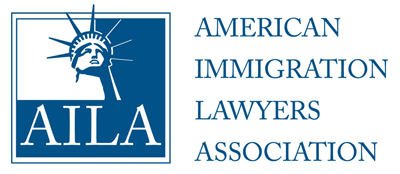By Franchesco Fickey Martinez
•
December 4, 2025
Time! That is the short answer. The US Citizen will save time. Lets find the starting line of this topic. A US Citizen meets a filipina or filipino. They fall madly in love. Beautiful! The US Citizen will eventually come to the realization that a PLAN needs to be created. If the US Citizen wants the future spouse to immigrate to the US, plan, plan, plan. The most important part of any plan is the time element. Marrying takes time. In the US, we get a marriage license today, and can marry today. Think of the Las Vegas Marriages we always hear about, or what many call eloping. This is NOT the case abroad. Many countries require the US embassy to give foreign permission of a US Citizen to marry abroad. Lets be specific to the Philippines. In the Philippines, you need time, and time INSIDE of the Philippines. Imagine flying over 24 hours to the Philippines and having to tackle all of the following: Finally getting to hold your Fiancee/Girlfriend (Fun Item) You get to eat some more of the good Filipino Food (Fun Item) Your Fiancee (you might go too or they acquire PRIOR to your arrival) goes the PSA to get their CENOMAR, certificate of no marriage (Not Fun Item) You, the US Citizen, must go to an appointment (2 weeks advance planning needed) at the US Embassy or Consulate for something similar to the CENOMAR (Not Fun Item) Both Fiances, now you apply for the Marriage License, NOT the license yet, just the application to get the license. [Philippine law requires a ten-day waiting period from the filing of the application to the issuance of the marriage license. These ten (10) days are business days, not counting weekends or holidays.] Marriage License is finally in hand 2-3 weeks later Then, you are finally married. US Citizens usually require a minimum of 4-6 weeks IN THE PHILIPPINES, in order to tackle all of the Philippine Requirements. TIMING, lets return to that topic. Most US Citizens considering marrying in the Philippines, will plan or push off a marriage for months or 1-2 years. A 1-2 month trip abroad is a BIG commitment. Takes a lot of planning. Financially, costs a lot. - Now, to the topic at hand, Utah Virtual Marriage Option allows the US Citizen to marry almost instantly. You can marry while you are abroad in the Philippines or another country. The US Citizen can even marry while still in the US, and then fly to see their new spouse and go on a honeymoon. Timing is in the US Citizen's favor. The PLAN can be more focused on the relationship, having fun, enjoying the Philippines, versus running around to government buildings to slowly become married. Now, What is the Catch? There are 4 catches. First, for US Immigration purposes, USCIS REQUIRES after 2024/2025 the spouses to meet in person after marrying virtually and before filing the I-130. Now, if both spouses are in the Philippines during the virtual marriage, which we HIGHLY RECOMMEND, the in-person meeting is easily met. Why do we highly recommend marrying virtually while in the same country? Because it means more to the spouses, to family, and when the officiant says: You may now kiss the bride, you really want to be in person for the once-in-a-lifetime moment. Now, you can marry while separated, but before you start any I-130 filing, you MUST MUST MUST go meet in person first. Second, PLAN a renewal of vows, either back in the US or in your desired church. It is not a mandatory item, but a formality that is appreciated by friends and family. Third, REGISTER THE MARRIAGE! The process is seen here: https://www.fickeymartinezlaw.com/utah-virtual-marriage-and-the-philippines-psa-the-report-of-marriage-rom-process Fourth, consider changing the wife's name to the married name shortly after marriage. Don't wait for a few days before or after the visa interview. If the Philippine passport is updated to the married name, then the Immigration visa/Green Card will be updated to the married name. Consider reviewing our other popular Philippine Article: https://www.fickeymartinezlaw.com/immigration/consular-processing/us-citizens-guide-to-marrying-in-the-philippines-and-immigrating-a-philippine-filipina-spouse-to-the-united-states Disclaimer: This Blog is made available by the lawyer or law firm publisher for educational purposes only as well as to give you general information and a general understanding of the law, not to provide specific legal advice. By using this blog site you understand that there is no attorney-client relationship between you and the Blog/Web Site publisher. The Blog should not be used as a substitute for competent legal advice from a licensed professional attorney in your state.













